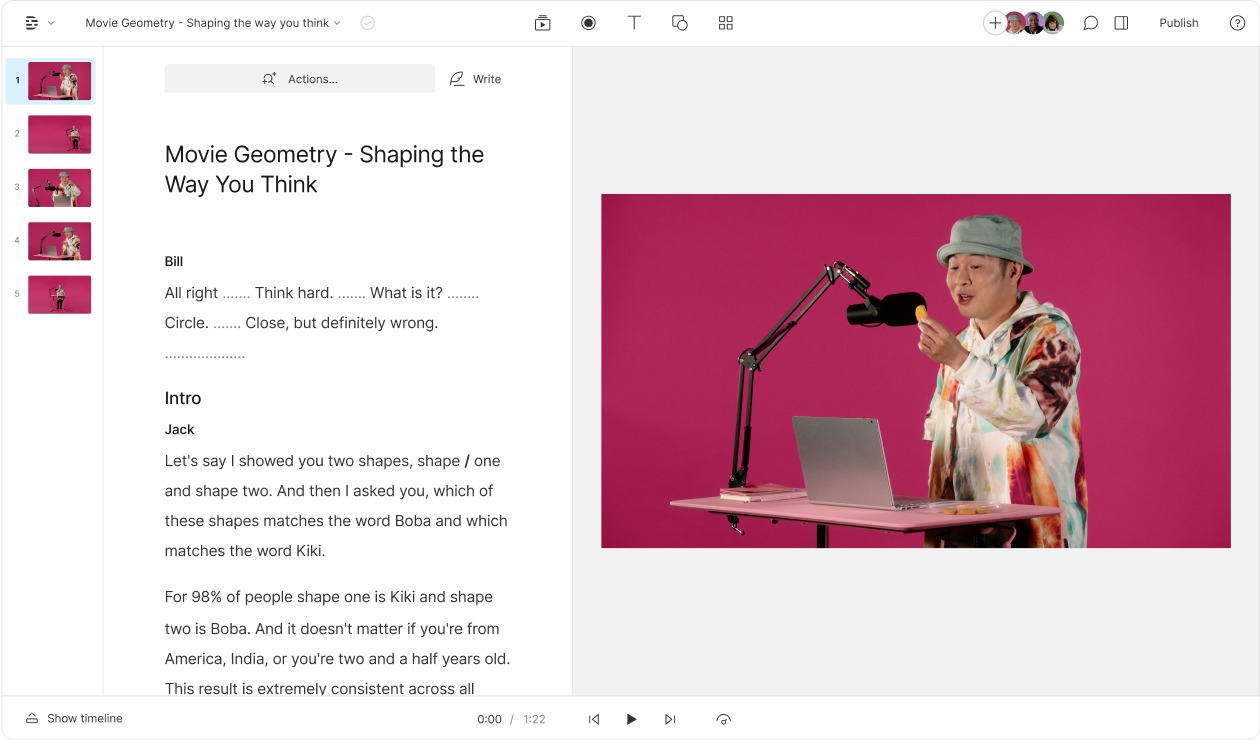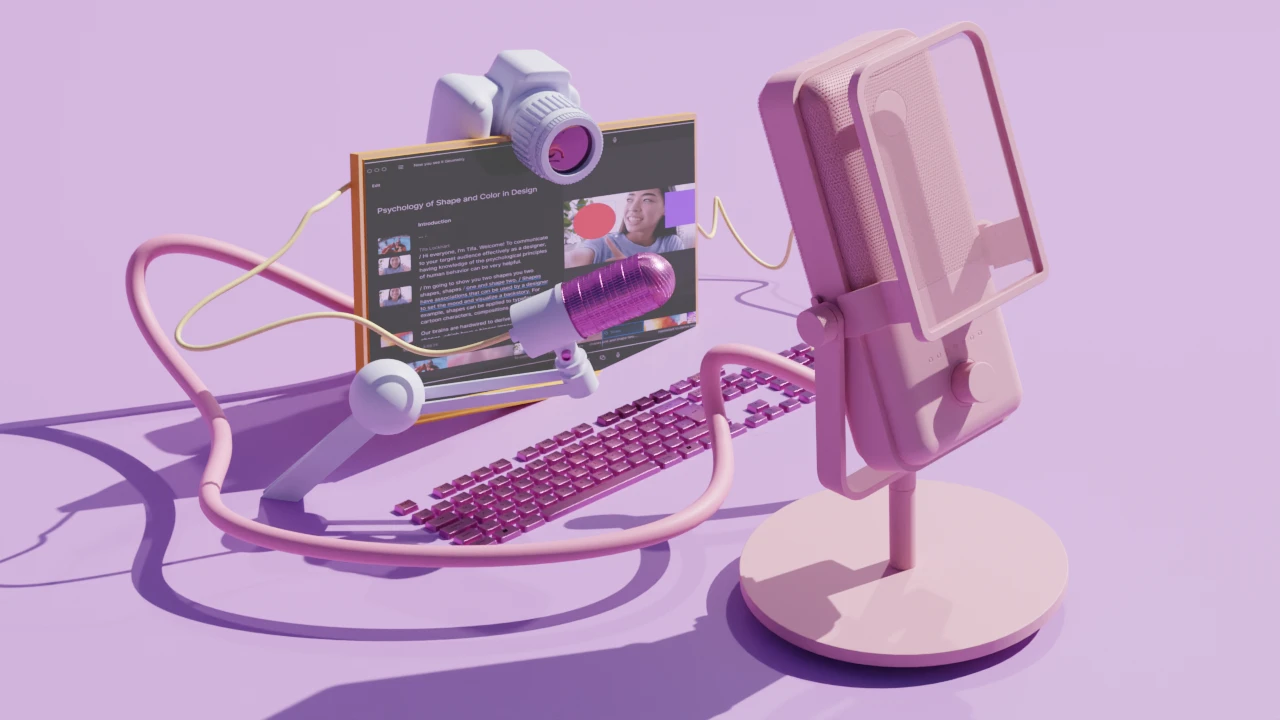What type of content do you primarily create?




YouTube Shorts are those snackable videos that thrive in YouTube's quick-content universe. Done right, they'll hook viewers and earn your channel a spot on the YouTube Shorts "shelf"—that TikTok-like scroll where content flies by at thumb-numbing speeds.
Creators chase after Shorts for good reason: explosive reach with minimal effort. One viral Short can deliver thousands of new viewers to your channel—the kind of algorithmic jackpot that makes the format irresistible.
But before you can launch your Short into the viral stratosphere, you need to know the ground rules. YouTube's parameters for Shorts aren't always obvious, so let's answer the question most creators still get wrong: how long can YouTube Shorts actually be?
How long can YouTube Shorts be?
To meet YouTube's standards, YouTube Shorts should be at least 15 seconds and up to 3 minutes long as of October 15, 2024. Before this update, the maximum length was 60 seconds. Submitting a "Short" of this length will land your video on YouTube's Shorts shelf.
YouTube Shorts aren't just about length, however. They also have to fit in the palm of your viewer's hands. Or, in this case, their smartphones. According to VidIQ, the ideal resolution for YouTube Shorts is 1080 x 1920 with an aspect ratio of 9:16. Your video will fit neatly into smartphones as users browse in portrait mode.
A key point: Shorts are an entirely different universe of videos from the typical YouTube scroll. Think of publishing Shorts as a new strategy. You're casting a new fishing line to hook new viewers to your channel. With the expanded 3-minute length, creators now have more flexibility for storytelling while still maintaining the quick-consumption format that defines YouTube Shorts.
YouTube's rationale for expanding Shorts from 60 seconds to 3 minutes
Contrary to popular belief, official details about YouTube's decision to shift from 60 seconds to 3 minutes are scarce. The platform has tested longer video formats to give creators more storytelling freedom and to mirror features offered by other short-form apps. Even though YouTube typically highlights brevity, it sees potential in letting creators develop thorough narratives. This approach is likely aimed at boosting viewer engagement by encouraging deeper watch sessions. It also lets content makers experiment with pacing, structure, and audience retention in new ways. This TechCrunch article indicates that YouTube's adjustments to Shorts focus on broader user creativity.
What is the ideal YouTube Shorts length for engagement?
A YouTube Short should follow a simple rule of thumb: express one idea. Don't overcomplicate that. Ideally, your YouTube Shorts length should be as long as necessary to get your point across—but no longer. The new 3-minute maximum gives you more breathing room, but remember that viewer retention remains critical to success.
According to StoryLab, about 70% of YouTube Shorts will use more than the 15-second minimum. With the expanded 3-minute maximum length, creators now have more flexibility to develop their ideas while still maintaining the quick-consumption format that defines YouTube Shorts.
If you want more success from YouTube's algorithm, don't obsess over YouTube Shorts length. Obsess over watch time. This remains true whether you're making 60-second or 3-minute Shorts.
You'll want to pay attention to average view duration. If your video captures users' attention and keeps them from swiping down for the next video, YouTube wants to reward you. You've successfully engaged your audience's interest.
For a Reddit user who experimented with hundreds of YouTube Shorts, one particular viral video lasted 20 seconds. But the average view duration was 25 seconds. Users stayed so long that they even let the video repeat. This demonstrates how rewatchability can be more important than the maximum length of YouTube Shorts.
Rather than relying on likes and comments to determine engagement, YouTube looks at user behavior, such as how long they watch your video.
So, at the risk of inventing a word, how do you increase the “rewatchability” of your videos? There are a few strategies:
- Creating videos with infinite loops. When editing your YouTube Short, consider ending it where you began, creating an infinite loop like in the Short below. If you keep users' attention to the end, they might stick around for another loop.
- Create shareable videos. What Shorts do users tend to share? It depends on your niche. But remember that one user re-watching the same video over and over won't be enough to raise your engagement statistics. You'll need crowds of users to drive up the average view length.
These are key variables, but there's no universal formula for success. It will all depend on your audience and niche. Watch other Shorts by competitors in your niche. How long are they? Are they using the full 3-minute length or keeping it shorter? Do they cover single topics or multiple topics? What kinds of audience expectations do the viral videos play against?
The good news about YouTube Shorts is that they don't take too long to produce and publish. Use that to your advantage. Become prolific. Experiment. Try different lengths and watch your analytics. You can always adjust your strategy if your views start to dip.
Algorithm differences between 3-minute and 60-second Shorts
Longer Shorts may benefit from extended watch time, but the YouTube Shorts algorithm still favors user engagement overall. When a creator opts for 3-minute Shorts, they can potentially harness deeper interactions, like rewatching or audience comments. Meanwhile, 60-second Shorts often rely on high-octane hooks to keep viewers glued for the entire runtime. According to a TechCrunch report, YouTube's algorithm puts a premium on viewer retention, making length only one part of the puzzle. Ultimately, both durations can thrive if they deliver clear value and keep people watching until the end.
Best practices for creating YouTube Shorts that get views
If there were a single tip for cracking YouTube's algorithm, someone would have exploited it by now. But there are a few different ways you can guide your Shorts to success:
Tip #1: Avoid repurposing content
You can successfully repurpose content that's already worked well on YouTube. But generally speaking, you'll succeed more if you make videos with YouTube Shorts in mind.
This is especially true when sharing videos across platforms. One video that performs well on TikTok might not do as well on YouTube. Each platform has different audiences, algorithms, and technical requirements.
Tip #2: Add captions
People might be busy—watching your Shorts at the gym, on the bus, or in a bustling living room. Captions make your video easier to follow.
They also correct for poor sound mixing. Users have no reason to stick around if no one can hear your video or understand what's being said. Frustrated, your users will swipe down, and your average view duration will go down with it.
While closed captions are best for standard YouTube videos, the short-form culture of YouTube Shorts calls for more eye-catching, baked-in captions, like those in the video below.
It's easy to add captions like these. Most video editing platforms will offer auto-caption features. Descript especially makes it easy, since automatic transcription comes standard and you can add stylish captions in a single click.
Whatever tool you use to make your captions, make sure they include high-contrast font so they're easy to read. The clearer your video is, the fewer excuses you'll give your audience to swipe away.
Tip #3: Use sound and song libraries
Full-length, popular songs can make looping your video difficult. You may also struggle with copyright issues.
Instead, rely on YouTube's native sound and song libraries. They'll spruce up your video with some audio interest without introducing complications.
Tip #4: Start with a powerful hook
You have three seconds to capture your audience's attention. What are some of the best ways to do this?
- Ask a question immediately, especially if it taps into your audience's pain point. If you publish cooking content, maybe the pain point is soggy fries. The video below uses both a question hook and a final result hook, as explained in the next bullet.
- Give away the final result, which is great for DIY, motivational before-and-after videos, or business videos. Then loop the rest of your content in to explain how you created that result.
- Preview what's to come. Notice how the video below begins by describing what's to come (“This hilarious scene from Revenge of the Sith…”). If your audience is interested, they have to invest a little more average watching time to get the goods.
A powerful hook increases viewer retention, and YouTubers note that your retention should be high—at least 80%—if you plan on going viral.
Tip #5: Cut dead air and "ums"
60 seconds isn't a lot of time. Watch some videos in your niche, and you'll likely notice how crisp and fast-paced they can be: minimal “Ums” and “Ahs.”
Fortunately, you don't have to go through and crop them all out yourself. Descript can automatically remove filler words and long silences between tidbits to keep your video under 60 seconds and moving at a good tempo.
How to create effective YouTube Shorts with Descript
You can create YouTube Shorts within YouTube itself, but for the most control, you'll want to use a full-featured video editor. For that, we recommend Descript. It offers transcript-based editing, so that editing your Short is as easy as editing a doc. It's also packed with powerful features like:
- Studio Sound, to polish up audio and remove background noise in one click
- Automatic captions in a variety of styles and animations
- AI Green Screen for changing your background to anything your heart desires
- AI voice cloning for quick corrections and automatic voiceovers that sound just like you
To get started, download and install Descript on your desktop computer, or head to the web version to hit the ground running immediately. Then:
1. Import the video you want to turn into YouTube Shorts into Descript. Alternatively, hit the "record" button and create your video right in the app.
2. To get your video into mobile-ready vertical orientation, click the rectangle at the top of the canvas and select Portrait. That will turn your video canvas to 9:16 orientation. Check the Advanced option to ensure it's in 1080x1920 resolution.
 |
3. Next, adjust your video layer so that it fills the entire canvas. An easy way to do that is to click the video layer, click Position, and select Fill canvas.
 |
4. Next, look through your Descript transcript to make your Short fast-paced and snappy:
- Remove any filler words, which are automatically underlined in blue. You can either remove them all automatically by clicking the Action Bar at the top of the window and choosing Remove filler words, or remove them one by one.
- Cut pauses to manage “jump cuts” that will keep your video's overall length down—and within YouTube Shorts standards. You can do this automatically by clicking the Action Bar and choosing Remove word gaps, then choosing how long of a silence you're willing to leave in.
5. Add captions by clicking the T icon at the top and choosing Captions. If you'd rather only have captions on a portion of the video, select that portion in the transcript, choose the + icon in the menu that appears, and click Captions. Adjust the font, color, size, and position of the captions until you're pleased with the result.
 |
6. Once you're satisfied, export your Short as an MP4 or publish it directly to YouTube.
YouTube Shorts length: Frequently asked questions
Can YouTube Shorts be 2 minutes?
As of October 15, 2024, YouTube Shorts can now be up to 3 minutes long. Before this update, the maximum YouTube Shorts length was 60 seconds, with a minimum of 15 seconds. Videos longer than 3 minutes will appear as standard YouTube videos.
Can YouTube Shorts be above one minute long?
Yes, your YouTube Shorts can now go up to 3 minutes long as of October 15, 2024. However, just because you can make longer Shorts doesn't mean you always should.
However, you will likely want users to watch as long as possible, by making your Short loopable and rewatchable. Average view duration is one of the top metrics YouTube tracks to measure your content's success, regardless of whether you use the full 3-minute maximum length of YouTube Shorts.
What is the maximum length of a YouTube Short?
The maximum length of a YouTube Short is now 3 minutes as of October 15, 2024. Previously, it was limited to 60 seconds. You can't combine videos to circumvent this rule, either—even if you stitch together videos into one, the total still can't exceed the maximum YouTube Shorts length limit of 3 minutes.
How to maximize your YouTube Shorts length
You can't make YouTube Shorts beyond the limit of 3 minutes. But you can get beyond the 15-second limit in the YouTube Shorts native recording tool by clicking the 15s icon in the upper right corner and choosing a longer limit. YouTube's expansion to 3-minute Shorts gives creators more flexibility for storytelling and engagement.
Is YouTube likely to expand Shorts beyond three minutes in the future?
As of early 2025, there are no official announcements that YouTube will allow Shorts to exceed three minutes. The platform frequently introduces new features, but it also remains cautious about changing core definitions to maintain the format’s quick-hit appeal. This article from TechCrunch suggests we can expect more updates, but they may center on monetization or interactivity rather than further length extensions. Despite speculation in creator communities, YouTube’s roadmap does not confirm any immediate expansions. For now, the recommended ceiling remains three minutes.
How does watch time and re-engagement factor into the YouTube Shorts algorithm?
YouTube Shorts still revolves around how effectively your content holds viewer attention. That means watch time and re-engagement—like viewers replaying your Short or commenting—are crucial. A TechCrunch report notes that YouTube places a premium on meaningful interactions, regardless of a Short’s length. This means both 60-second and 3-minute videos need strong audience retention to trigger algorithmic recommendations. Ultimately, hooking viewers early and keeping them involved remains key, whether your Short is short or slightly less short.





























%201.svg)
















%20(1).JPG)

